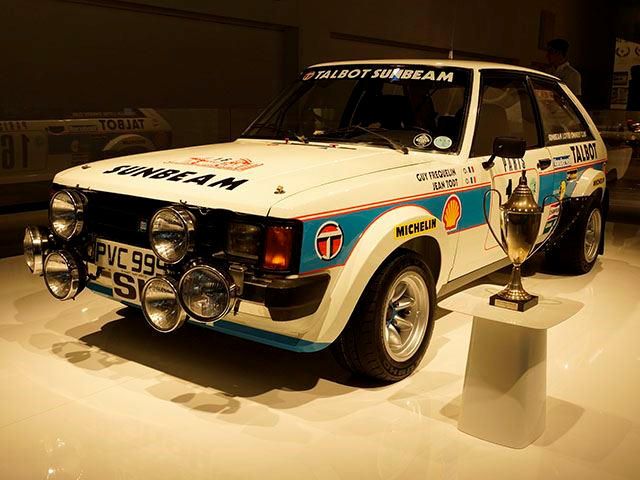
We've had plenty of fun doing these "Great British Cars That America Missed Out On" pieces. But it's reached the stage now where we'll soon be scraping the bottom of the barrel, or resort to writing about endless Lotus and TVR models for weeks on end. We can't help but feel deja vu will set in if we go with the latter route. So, to round out this series we've decided to go with a personal favorite of ours that we feel is rather overlooked: the cult classic pocket rocket that is the Talbot Sunbeam Lotus.
Every great car has an interesting backstory to tell, and the Sunbeam hot hatchback is no exception. The concept of the car, for instance, was partly the result of Chrysler (the owner of Sunbeam at the time) conjuring up last ditch attempts to breathe some life back into the ailing company. However, despite brokering a deal with Lotus to develop a twin-cam four-cylinder engine, and being on the verge of completing work on the sporty Sunbeam, Chrysler eventually sold the marque to Peugeot. It, in turn, promptly rebranded the car as a Talbot Sunbeam, put it into production in 1979 and accepted all of the praise and acclaim when the motoring press discovered the Talbot Sunbeam Lotus was a truly terrific little car.
One key reason why the Talbot Sunbeam hot hatch was received so well was, as with some other cars we've discussed in this series, the Lotus connection. As well as making the terrific 2.2-liter 150-horsepower engine (a true powerhouse of a motor by 1979 standards), Lotus also fiddled with the suspension settings, which instantly made the sporty Sunbeam an ace car to drive. It does admittedly understeer a bit, but that can easily be rectified by a quick stab on the throttle and a dab of opposite lock to straighten the Sunbeam out. Cars like the Talbot Sunbeam Lotus make us yearn for more rear-wheel drive hatchbacks here in the States. We need an alternative to the Smart Fortwo!
So good was the Talbot Sunbeam Lotus, in fact, that Peugeot quickly realized it would make a pretty epic rally car. And, after much tinkering and tweaking (especially to the engine, which was able to produce up to 250 hp in competition guise), that's exactly what happened.
In 1980 the Talbot Sunbeam Lotus become the last rear-wheel drive rally car to win the British round of the World Rally Championship. It would secure Talbot its first and only Manufacturers' title in the World Rally Championship the following year. Even today, the perky little Talbot Sunbeam Lotus is a fairly regular and popular sight at classic car rallies, which are among the few places in the world where the Talbot rally car can be driven as its makers intended. With all of that acclaim and success, you'd have thought that Talbot would have been on to a winner with the Sunbeam Lotus. However, things didn't turn out in the car's favor.
In 1981, Peugeot closed down the factory that built the Sunbeam, bringing the Talbot Sunbeam Lotus story to a close a mere three years after the first cars were built. It also perhaps didn't help that the Talbot Sunbeam Lotus was quite an expensive car for its time. Converted to today's rates, the Sunbeam Lotus cost the best part of $32,000, which helps explain why only 2,308 examples were ever made. With several hot hatch models in the following years stealing the Talbot's thunder, it's no surprise that it slipped under the radar.Thankfully, the Talbot Sunbeam Lotus is being recognized as a performance car icon, and prices are slowly creeping up.
It's not too uncommon, for instance, to see examples listed at $20,000. For reference, really good condition Talbot Sunbeam Lotuses would often go for half that amount a decade ago. One even managed to sell for the equivalent of $73,000 in 2014, though that was admittedly a pristine condition Lotus Sunbeam with 193 miles on the clock. Still, now's probably the best time to snap up a Talbot Sunbeam Lotus before they really pick up in value; they don't breach any import laws, so there's nothing stopping you from bringing one to the States if you can afford it.

